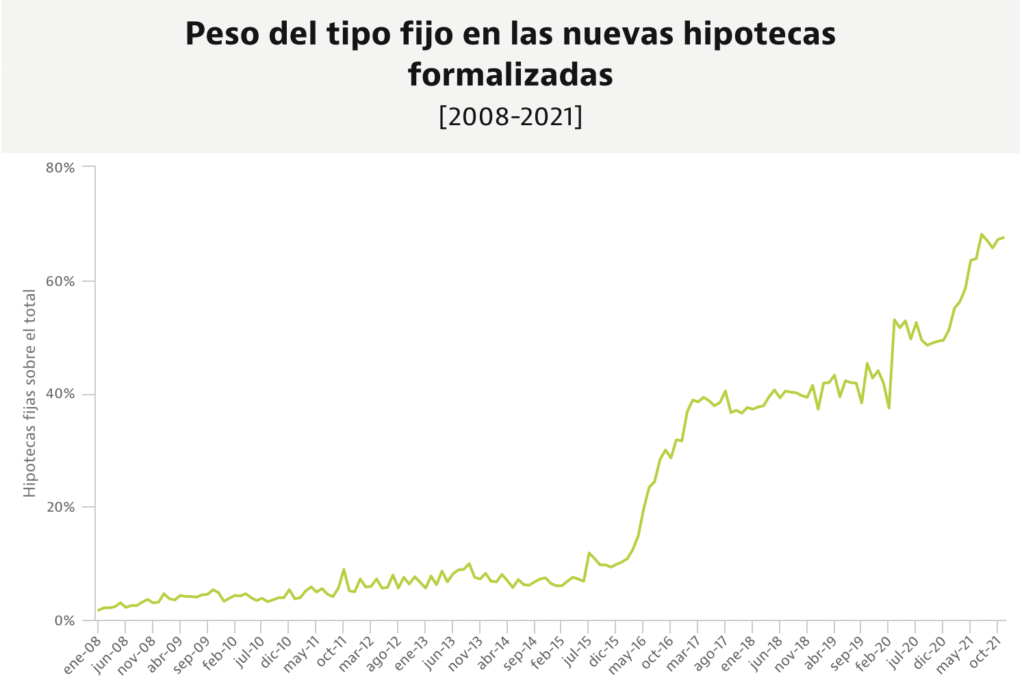The Spanish real estate market is currently recovering after 7 years of crisis. During this period (2007 to 2014), property prices declined severely, while banks seized hundreds of thousands of properties as people couldn’t pay back their loans. Clearly, the Spanish market is showing signs of recovery. Let’s study several graphs and key indicators to confirm this introduction to the Spanish property market.
Spanish property prices are back to their level of 2004
Spanish property prices are the same now, as they were in 2004. According to ElConfidencial, the three key things to summarize the situation of the Spanish real estate market are:
- Real estate prices in 2019 are equal to property prices back in 2004 (yet -35% compared to 2007)
- There is more work (employment)
- However, property sales are still significantly lower!
Two million additional jobs, yet the number of mortgages and property transactions are much lower
“The price of the square meter stood at 1,709 euros in 2004, against the current 1,616 euros. In addition, there are two million additional jobs compared to 2004 and, nevertheless, number of transactions is 31% lower, and number of mortages signed is 70% lower”.
Juan Fernández-Aceytuno, CEO of Sociedad de Tasacion (valuation)
10 years of evolution in the mortgage market in Spain
The number of mortgage approvals is finally starting to grow, after 7 years of crisis. Over 1.1 million mortgages were approved in 2004, while in April 2019 banks approved only 30,000 credits to property buyers. Indeed, this shows that the current trend is 360,000 mortgages approved per year, which is close to 4 times less than in 2004!
Graphically, the conclusion is even more obvious: Idealista shows that there were over 1 million mortgages up until the crisis of 2007. After that, Spanish people couldn’t pay back their mortgages, and banks seized hundreds of thousands of properties.
To prevent the situation from happening again, banks are not financing 100% of the property value anymore. Indeed, in most cases the maximum is 80% of the property value (Fotocasa). Consequently buyers need to bring 20% as well as all costs and taxes associated to the acquisition.
In 2018, 6.6% of the total loans granted to buy a house went to foreigners, compared to 93.3% to Spaniards. A record 23,090 mortgages were granted to foreigners (more than ever) out of a total of 346,366 loans.
Bonus: check the current mortgage conditions on HowToBuyInSpain.com

Number of mortgage approvals & number of property transactions
Even more interesting, we can study how number of mortgage approvals and number of real estate transactions have evolved since 2007. Here, Idealista titled its graph “From giving away money for free, to controlling mortgage approvals tightly”. Clearly, we can see that the number of real estate transactions (yellow line) and the number of mortgage approvals, in grey, work together.

Spanish people used to love variable interest rates – but now they hate them
What the Spanish call “tipo fijo” (fixed interest rate) was extremely unpopular before the crisis happened. Less than 3% of mortgages were signed with a fixed rate. However now, close to 70% of mortgages are signed with fixed interest rate. This is nothing short of a historical record number in Spain.

How could it go from 3% of mortgages contracted with fixed rates in 2008, to as much as 70% in 2021? The reason is that when the crisis occurred, many Spanish people had a mortgage with a variable rate, and their monthly payments went up significantly, forcing them to sell their flat or have it seized by banks. For example, in this article in LeFigaro, you can see the example of a woman, Sandra, who saw her monthly repayment go from 600 euros per month to 820 euros per month in 2008.
7 years of salary (instead of 3 years) to buy a home
The effort that a family has to make to buy a house rose in recent years to reach now over 7 years of salary. Worse, in Catalunya (region of Barcelona), this is now over 8.4 years. Then again, a graph from Idealista shows this drastic evolution, from 3 years of salary only back in the 1990s, up to 7 years and above since 2004. Therefore to an extent, the real estate crisis in 2007 has rectified somehow the situation to more acceptable levels.
However we could also zoom out, and see what this figure is in other countries. In France for example, according to SeLoger, 13 years of salary are needed to buy a property.


